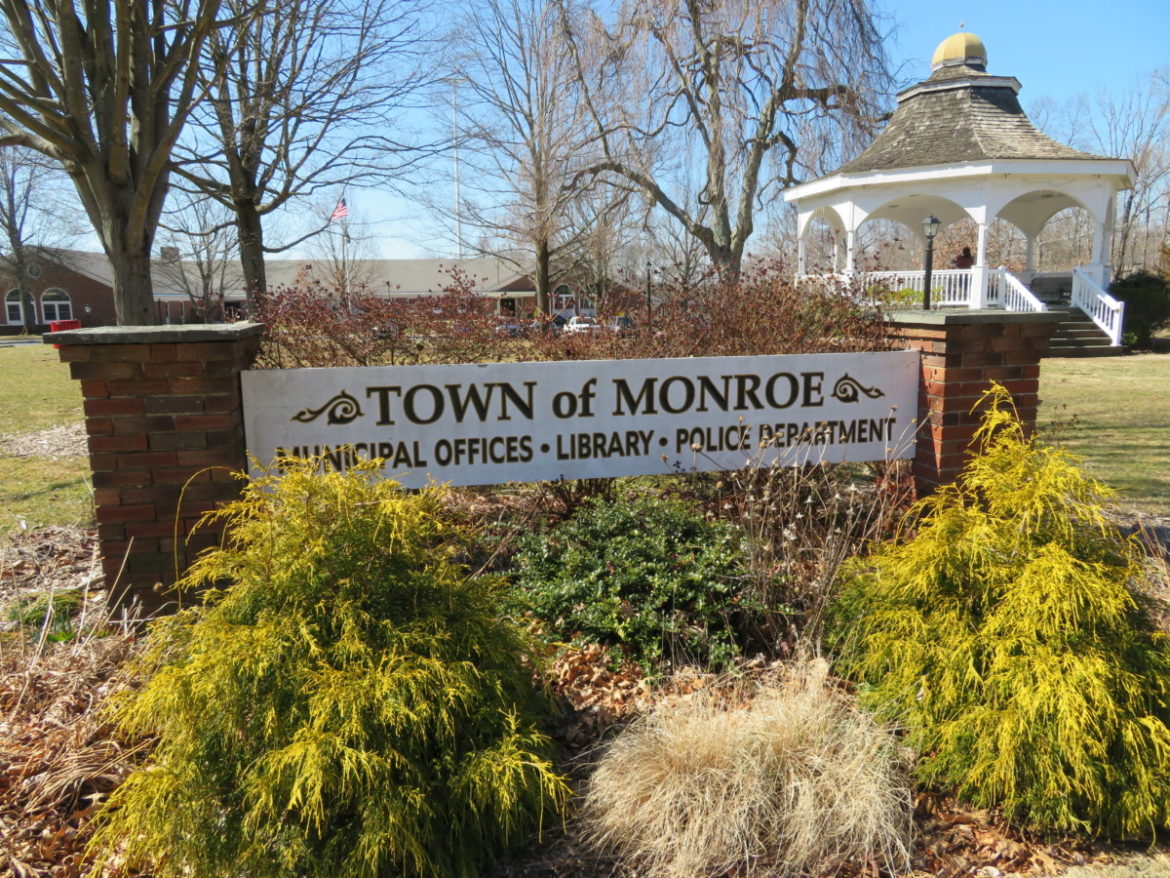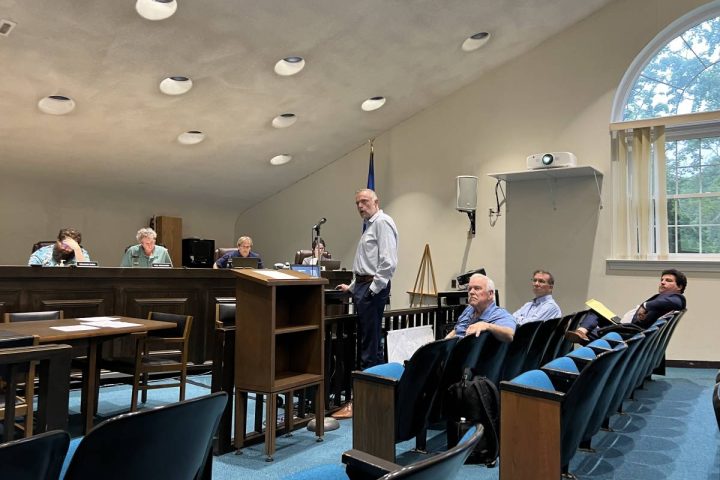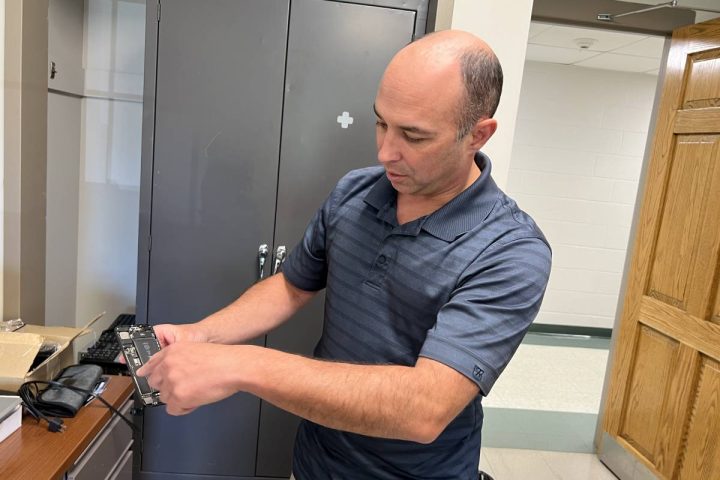MONROE, CT — Should Monroe entice the YMCA to use the former Chalk Hill School, build bicycle paths along its roadways or find more ways to take advantage of its land bordering Lake Zoar? These were some of the ideas discussed at the public workshop on Monroe’s Plan of Conservation and Development last week.
The workshop came on the heels of a town-wide survey to gather more information on what residents believe the vision, priorities and goals for Monroe’s future should be.
Francisco Gomes, of Fitzgerald & Halliday, Inc., the consultant hired by the town to assist the Planning and Zoning Commission with the POCD update, said the survey received over 2,000 responses and can still be taken. The participation rate was high, he said, accounting for around nine percent of the town’s population.
“This is very representative of the community,” Gomes said, adding it produced constructive feedback. “That being said, this is just one piece of information.”
He said the survey and stakeholder meetings helped put planners in the right direction.
“We heard from a range of age groups, but very few under 30,” Gomes said of the survey. “We feel good about the age range we heard from, though it would be nice to hear from more younger adults.”
Last Thursday’s public workshop brought Gomes, the Planning and Zoning Commission and the POCD Committee to the end of the discovery process. Now they will reconvene to identify the priorities, goals and vision of the plan.
“Then we really need to roll up our sleeves and get the plan written,” Gomes said.
The state of Connecticut requires all 169 municipalities to prepare and or update their Plan of Conservation and Development every 10 years, according to state statutes. Town Planner Rick Schultz said it is required by the Office of Policy and Management and is needed when a local municipality applies for grants.
Monroe’s demographics
Monroe’s population grew tremendously in the 70s, 80s and 90s and right around 2000 it flattened out, Gomes said. Monroe currently has around 20,000 residents, but only grew by about 500 residents since 2000.
“The growth has been very flat since that time,” Gomes said. “A little bit of growth every year, but really, really flat. You’re not growing anywhere near what you used to be, but your demographics are changing. You’re an older community and you’re getting older.”
The median age in town is about four years older than Fairfield County and the state of Connecticut — 44.5 years in Monroe, 40.2 in Fairfield County and 40.8 in Connecticut.
Monroe has had a population loss of young residents (below age nine) and residents age 35 to 49 between 2010 and 2017.
One trend demographers are seeing over the past decade is a high number of 20-somethings still living with their parents, whether it’s the economy, student loan debt, a lack of housing choice or they want to stay in their community but don’t have housing they can afford on their own.
Less than 50-percent of those surveyed see themselves living in Monroe in the next 10 years. Gomes said this surprised him. “I thought closer to two-thirds of the people would plan to be in Monroe for the next 10 years,” he said.
Gomes said Monroe is not replacing a lot of the people in their 50s, because there are not enough people in their 30s and 40s. On the other end of the spectrum, he said the number of children under age five in Monroe is down 30 percent.
State demographers project a steady contraction in school enrollment in Monroe over the next four years. However, more families have been moving to town amid the coronavirus pandemic. Gomes said education officials will provide insight for the new POCD.
“We see growth in 2010 to 17 in school age kids, college age kids, young adults and the baby boomer age cohort,” Gomes said.
Housing
The town has had an average of nine housing permits per year in the last 10 years.
“There’s fewer people to a household, now the average is 2.5 people instead of 3.5 people,” Gomes said, adding Monroe has not been building a lot of new housing to accommodate new people moving in.
Gomes said some of the new housing, rather than adding to the town’s housing inventory, was built after existing houses were demolished.
Homeownership is 90.2 percent in Monroe, 67.7 in Fairfield County and 66.6 percent in Connecticut, according to 2017 numbers.
The state of Connecticut is pushing for more affordable housing to be built, with a goal that a minimum of 10 percent of every municipalities’ housing stock meet the state definition of affordable.
If the town does not make significant progress in adding affordable housing, Gomes said a developer can go to court and bypass local zoning.
Currently, Connecticut’s 8-30g statute puts the burden of proof on towns who deny affordable housing applications, rather than on the developer.
Schultz said all towns are now required to establish an affordable housing plan. Gomes said the town can work with developers so there is some local control over the appearance and locations of different types of development.
Monroe’s housing is predominantly single family detached homes. Non-single-family detached homes in Monroe account for 14.4 percent of its housing, compared to 42 percent in Fairfield County and 40.8 percent in the state.
There is rising demand for apartments in Connecticut and two thirds of those surveyed favor allowing residential uses in commercial business zones. The most common answer is apartments should be allowed above retail and commercial businesses, according to Gomes.
He said nearly a third of the community said no to the idea, but for different reasons. Some want to maximize land for commercial development and some do not want apartments at all.
What Monroe wants
Schools, safety, rural character and its natural landscape are the top reasons residents gave for choosing to live in Monroe, according to the survey.
“When we asked people what they value most, parks, open space and schools jumped right up,” Gomes said.
Asked what the town should place more focus on, most said economic development to grow the grand list, and building trails, greenways and passive open space.
Of the town’s biggest challenges, most responding to the survey said it is property taxes, a lack of commercial growth and funding for schools — with some arguing there is not enough and others contending it accounts for too large of a proportion of the town budget.
Gomes said 86 percent of Monroe’s grand list of taxable income comes from residential properties. Another factor increasing the tax burden on residential property owners is that the town maintains approximately 90 percent of its roads.
“Monroe has 36 linear feet of local roadway per resident,” Gomes said. “This is nearly twice the share of local roadway per resident when compared to Fairfield County as a whole and 40 percent higher than the state average.”
Monroe is a suburban community, but it does not have a dense population, Gomes explained.
“Staying on top of this infrastructure, when it’s spread out over a smaller number of people, and households and property tax bills, is a challenge for the community,” he said.
Sidewalks, bicycle riding
The Pequonnock River Trail, also known as the Housatonic Rail Trail, is a prominent resource for recreation and travel in town, but Gomes said Monroe does not have the infrastructure that allows people to get to the trail on their bikes without driving there.
He said sidewalks, paths and bicycle facilities are limited in Monroe, which has approximately two miles of sidewalks, mostly along routes 110 and 111.
Gomes said 99-percent of residents get around town by driving, so there are few alternative modes of travel. He said studies do not include people from Bridgeport and Trumbull who take the bus to get to jobs on Route 111.
Despite this, less than 30 percent of those surveyed identified traffic congestion as their primary concern.
“I absolutely believe interconnecting walkways or sidewalks in the commercial corridors on Route 25 and 111 would help businesses out,” said Robert Westlund, a Planning and Zoning Commission member.
Gomes agreed that it is convenient for residents to park once and be able to walk to more than one store or to a restaurant while shopping. That way, he said people do not have to go back onto the road every time, adding cars to traffic.
He said the town can pursue grants and work with the Connecticut Department of Transportation to get more money for infrastructure.






